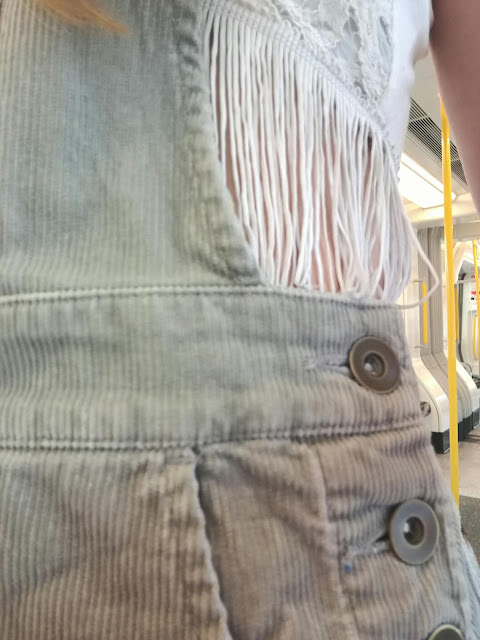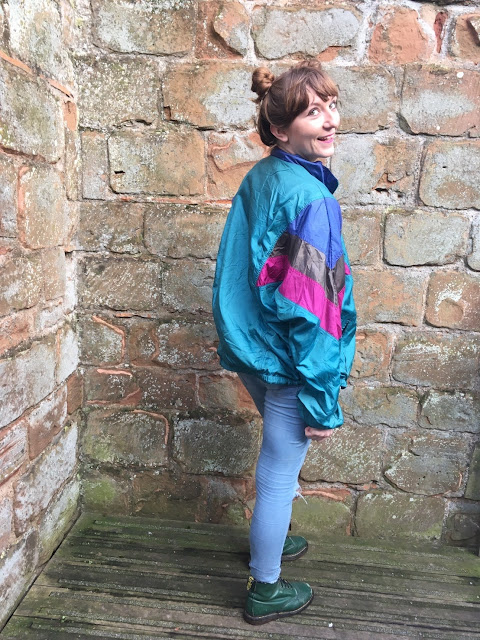- 06:31:00
- 0 Comments
In the good part of the internet - the part concerned with social justice, the environment and human and animal rights - a move against fast fashion has been gaining traction.
*yaaay*
Modern lifestyle gurus are creating amazingly relate-able video-graphics, sharing an environmentally conscious message whilst escaping the 'unwashed hippy' vibe that has previously surrounded environmental campaigns. This video by One Million Women has been viewed over 400,000 times!
Bangin'.
Textile waste is a massive problem, and raising awareness that such a problem actually exists is super great.
Lobbying has positively affected the industry, with high street brands aiming to be more transparent about their manufacturing process. H&M continue to run successful 'Conscious Collections', working with sustainable fabrics and innovative recycled materials.
But really, sustainable fashion is an industry pacifier. A buzz word, used to keep sales high in a world where the concerned-generation flaunt their humanity, by way of woke hashtags.
In terms of fabric production, there is little evidence that one fabric is definitively better for the environment than another. Whilst synthetic fabrics, like polyester and nylon use more electricity than cotton, linen and hemp, natural fabrics use much more water in their production. According to the WWF, to produce the cotton needed for a single T-shirt and a pair of jeans, roughly 20,000 litres of water are needed!
Organic cotton brands like People Tree are making a direct impact on the lives of cotton farmers in developing nations, by combating worker's exposure to polluting pesticides. However they are failing to address the irony that some of the worlds' major cotton producing countries are also facing the world's most major water shortages.
In short: sustainable fashion is a myth.
If we want to reduce the environmental impact of our wardrobes, (the fashion industry being the "second most polluting industry after oil", by the way), we have to steer clear of the whole concept of 'fast fashion'.
Buy less, use things for longer, and re-use more.
Accepting the industry assurance that purchasing a dress to wear or one night out is totes legit' as long as it's sustainable is insulting to the intelligence of consumers, and damaging to our planet.
*yaaay*
Modern lifestyle gurus are creating amazingly relate-able video-graphics, sharing an environmentally conscious message whilst escaping the 'unwashed hippy' vibe that has previously surrounded environmental campaigns. This video by One Million Women has been viewed over 400,000 times!
Bangin'.
Textile waste is a massive problem, and raising awareness that such a problem actually exists is super great.
Lobbying has positively affected the industry, with high street brands aiming to be more transparent about their manufacturing process. H&M continue to run successful 'Conscious Collections', working with sustainable fabrics and innovative recycled materials.
But really, sustainable fashion is an industry pacifier. A buzz word, used to keep sales high in a world where the concerned-generation flaunt their humanity, by way of woke hashtags.
 |
| An H&M dress made from recycled plastic |
In terms of fabric production, there is little evidence that one fabric is definitively better for the environment than another. Whilst synthetic fabrics, like polyester and nylon use more electricity than cotton, linen and hemp, natural fabrics use much more water in their production. According to the WWF, to produce the cotton needed for a single T-shirt and a pair of jeans, roughly 20,000 litres of water are needed!
Organic cotton brands like People Tree are making a direct impact on the lives of cotton farmers in developing nations, by combating worker's exposure to polluting pesticides. However they are failing to address the irony that some of the worlds' major cotton producing countries are also facing the world's most major water shortages.
 |
| Yup PeopleTree, and so does every water shortage... |
In short: sustainable fashion is a myth.
If we want to reduce the environmental impact of our wardrobes, (the fashion industry being the "second most polluting industry after oil", by the way), we have to steer clear of the whole concept of 'fast fashion'.
 |
| Shop here insted? |
Buy less, use things for longer, and re-use more.
Accepting the industry assurance that purchasing a dress to wear or one night out is totes legit' as long as it's sustainable is insulting to the intelligence of consumers, and damaging to our planet.
- 09:58:00
- 0 Comments
Dressing for the cold is so challenging. Keeping warm, at the same time as standing out from the crowd (for the right reasons) is a daily struggle right now. I forgot how long English winter was, and how everyone reverts to the uninspiring uniform of skinny jeans, a black coat and an oversized scarf. I found some of this-season's ankle-baring jeans in oxfam, super on trend, but it's so cold at the moment, I had to pair them with Doc's for warmth, I literally will not sacrifice snuggly for stylish!! Saying that, the lace front top (originally H&M) was a little cold....
 |
| Sports jacket - Vintage Adidas Lace front Top - Originally H&M Jeans - Originally Primark All found in charity shops Boots - My Mum's old Doc Martens |
Hope you had a great weekend,
Rhio
- 09:18:00
- 0 Comments









